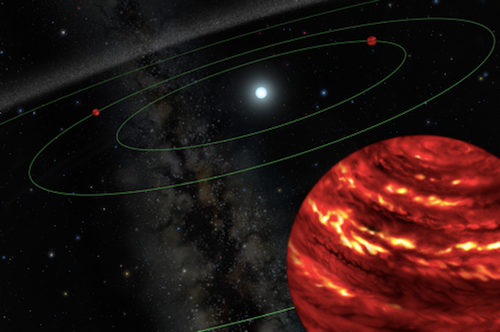Our galaxy, rich and vast beyond imagination, houses an estimated 200 billion stars, each potentially the sun to its own collection of planets. Among this stellar multitude, our solar system—with its unique designation—serves as just one example of the countless planetary systems that likely span the Milky Way. To date, astronomers have identified over 3,200 stars accompanied by planets, revealing a cosmos teeming with worlds beyond our own. This figure, impressive as it may seem, merely scratches the surface of galactic possibilities, hinting at the existence of even more planetary systems awaiting discovery.
The quest to find these planetary brethren has not been without challenges. The vast distances separating us from even our nearest cosmic neighbors turn the task of detecting exoplanets into a formidable endeavor. Stars, with their overwhelming brilliance and size, often dwarf the planets in orbit around them. Spotting a planet near a distant star, therefore, becomes akin to discerning a firefly flitting near a lighthouse from miles away—a task that showcases both the difficulty and the determination involved in these astronomical pursuits.
Yet, it's not simply the existence of these planets that captivates the imagination, but their astounding diversity. The galaxy's catalog of exoplanets encompasses a range of worlds, from "super Earths" with gravitational pulls significantly stronger than our home planet, to fascinating binary sunset systems where planets orbit dual stars, akin to scenes straight out of science fiction. Remarkably, the TRAPPIST-1 system alone boasts seven Earth-sized planets, raising the possibility of not just water, but perhaps even life, existing in conditions markedly different, yet intriguingly parallel, to those on Earth.
These discoveries have been largely propelled by advancements in technology and methodology. The Kepler mission, for instance, contributed significantly to our growing exoplanet directory by confirming the existence of over 2,600 planets outside our solar system and earmarking thousands more for further investigation. Following Kepler, the Transiting Exoplanet Survey Satellite (TESS) initiative expanded the search, aiming its gaze across the entire sky to uncover planets orbiting nearby stars. The forthcoming launch of the James Webb Space Telescope promises to further our knowledge, enabling detailed studies of these distant worlds and potentially uncovering the molecular signatures of life.
Amidst these scientific advancements lies a profound question that has spurred humanity's gaze toward the stars for generations: Are we alone? By charting the unexplored territories of our galaxy and studying the exoplanets that dwell within, astronomers inch closer to unravelling this mystery. Each newly discovered planetary system not only broadens our understanding of the cosmos but also adds pieces to the puzzle regarding the conditions necessary for life as we know it.
In contemplating the vastness of our galaxy and the abundance of planetary systems it hosts, one cannot help but marvel at the potential for diversity, complexity, and, perhaps, life, existing across the Milky Way. As our technological capabilities evolve and our cosmic horizons expand, so too does the possibility of one day answering the ultimate question of our place within this expansive, star-studded tapestry.
Tags:
Cosmology

